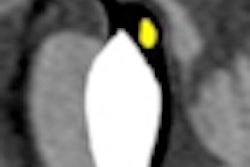
NEW YORK (Reuters Health), Sep 17 - In children with, or at risk for, hypopituitarism, neuroradiologic findings can predict the presence and extent of the disorder, U.K. researchers report in the September issue of Clinical Endocrinology.
"This study," senior investigator Dr. Mehul T. Dattani told Reuters Health, "demonstrates that structural abnormalities of the forebrain and pituitary gland identified in patients with hypopituitarism can often predict the extent of endocrinopathy, and perhaps even the likelihood of further endocrinopathy."
Dr. Dattani and colleagues at Great Ormond Street Hospital for Children, London, came to this conclusion after reviewing clinical, biochemical, magnetic resonance imaging, and molecular data on 170 children, 84 of whom were known to be at high risk for congenital hypopituitarism because they had optic nerve hypoplasia.
Out of these 170 children, 137 had hypopituitarism.
Among the researchers' observations:
- The presence of optic nerve hypoplasia was significantly associated with an absent septum pellucidum, an abnormal corpus callosum, and stalk abnormalities.
- The risk of hypopituitarism was more than 27 times greater in patients with an undescended posterior pituitary.
- Anterior pituitary hypoplasia and an absent pituitary stalk were significantly associated with hypopituitarism.
- Combined pituitary hormone deficiency was more often found in those with an abnormal corpus callosum and stalk abnormalities.
- Compared to patients with "idiopathic" hypopituitarism, patients with optic nerve hypoplasia had a significantly greater prevalence of diabetes insipidus and deficiencies in thyrotropin and adrenocorticotropic hormone.
"Magnetic resonance imaging was normal in only 13 of 137 patients with hypopituitarism within this cohort," the researchers point out.
They conclude: "A high prevalence of extrapituitary malformations in our cohort also adds support to a genetic etiology in the pathogenesis of hypopituitarism. ... Further advances in molecular genetics will shed light on the marked phenotypic variability observed in this cohort of patients."
By David Douglas
Clin Endocrinol 2009;71:376-382.
Last Updated: 2009-09-16 15:39:32 -0400 (Reuters Health)
Copyright © 2009 Reuters Limited. All rights reserved. Republication or redistribution of Reuters content, including by framing or similar means, is expressly prohibited without the prior written consent of Reuters. Reuters shall not be liable for any errors or delays in the content, or for any actions taken in reliance thereon. Reuters and the Reuters sphere logo are registered trademarks and trademarks of the Reuters group of companies around the world.

















